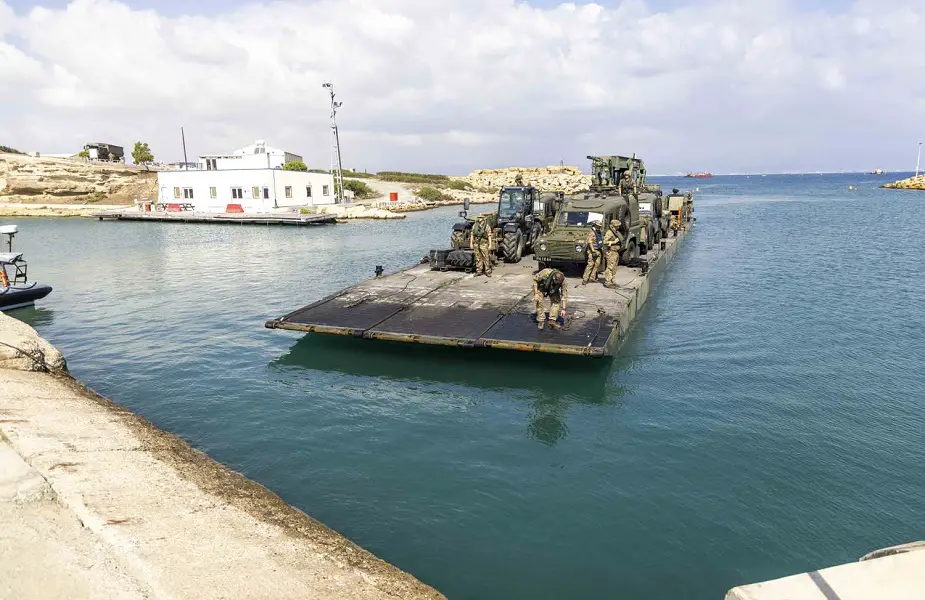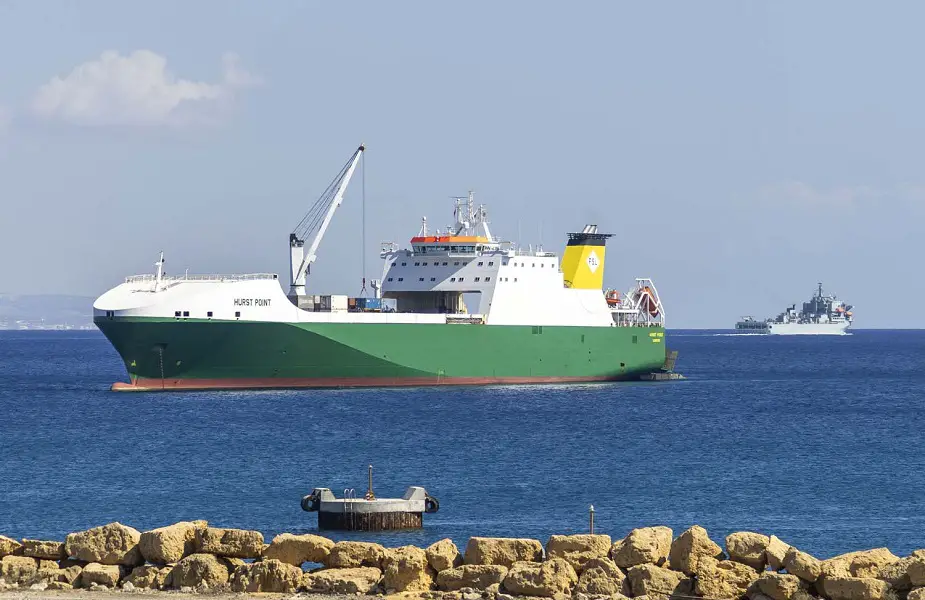Breaking news
Royal Marines spearheaded the UK's largest combined amphibious exercises in years.
Royal Marines spearheaded the UK’s largest combined amphibious exercises in years as they cleared the way for a formidable joint force to land in Cyprus. The exercise was a rehearsal of Joint Theatre Entry – military parlance for the landing of lots of different military elements from air, land and sea into a potentially hostile region.
Follow Navy Recognition on Google News at this link
 A Wildcat helicopter flies towards Hurst Point (Picture source: Royal Navy)
A Wildcat helicopter flies towards Hurst Point (Picture source: Royal Navy)
Forces launched from the sea from a Royal Navy task force deployed on a European security mission – known as Littoral Response Group North – which is operating across the Eastern Mediterranean, North Africa and the Adriatic this autumn.
More than a thousand sailors and Royal Marines are deployed with this response force, which is led by amphibious flagship HMS Albion and includes RFA Argus, RFA Mounts Bay, HMS Defender and three helicopter squadrons.
This potent group came together with elements from the British Army and RAF to operate in the waters around the RAF base in Akrotiri, on the southern-most tip of Cyprus.
Royal Marines of Arbroath-based 45 Commando led the way, forming a beachhead after launching from landing craft from Albion and Merlin helicopters based on RFA Mounts Bay and RFA Argus.
It paved the way for the British Army’s 17 Port and Maritime Regiment of the Royal Logistic Corps to offload equipment from cargo ship Hurst Point, with a Royal Navy Puma drone providing surveillance overhead.
After establishing logistics, the joint force was then ready to forge inland and complete further objectives, being tested in a range of real-world scenarios from war fighting to disaster relief and humanitarian aid.
As commandos led the way, a range of infrastructure was brought ashore for Royal Engineers to build a camp able to support 500 personnel and designed to house people in the event of a crisis.
Captain Simon Kelly, task group commander and Commanding Officer of HMS Albion, said: “Very few Armed Forces have the ability to deliver joint amphibious effect on this scale and at this pace.
“The landing craft and helicopters of the Littoral Response Group North task group were a key part of supporting the Army and RAF in exercising this key UK capability.
“Our time alongside in Cyprus also provided a fantastic opportunity to support the British High Commission, demonstrating the UK’s commitment to the island.”
 A Mexeflote raft lands at shore to allow vehicles onto land (Picture source: Royal Navy)
A Mexeflote raft lands at shore to allow vehicles onto land (Picture source: Royal Navy)
The exercises – known by the codename Austere Wolf – tested how the Littoral Response Group North operates, looking at how quickly it is able to come together, hit a coastline and push forward inland from a beachhead.
Lieutenant Colonel Paul Timmins Royal Marines, HMS Albion’s Amphibious Operations Officer, said: “Exercise Austere Wolf has offered us a unique opportunity to integrate land, sea and air elements in this environment.
“We have had the opportunity to develop the Royal Navy’s Littoral Strike capability further, allowing us to deliver joint combined amphibious operations more effectively.”
As supplies rolled ashore, 45 Commando strike teams – comprised of small determined bands of commandos chosen for each specific mission – continued to forge inland, tasked with clearing the ruins of Old Paramali, an abandoned village around 16 miles from Akrotiri.
The marines worked closely with the Army’s 33 Engineer Regiment and, with fire support from teams, including Viking armoured vehicles, from their brethren in 45 Commando and 29 Commando Royal Artillery, they cleared the village at pace.
1 Military Working Dogs Regiment were then deployed to search the captured village to collect intelligence to shape future operations, while engineers used Dragon Runner bomb disposal robots during a bomb disposal training scenario.
Back at the beachhead, as vehicles streamed ashore, a mock explosive device on the slipway created an emergency for the task force to react to.
This is when support ship RFA Argus and her on-board medical facilities came into their own.
Casualties were rapidly moved from the battlefield to Argus using Merlin helicopters from 845 Naval Air Squadron, and were treated and assessed while trialling new equipment.
Lieutenant David Roper, Officer Commanding of RFA Argus’ Medical Facilities, said: “RFA Argus has a world-class medical facility that provides timely access to deployed hospital care for the Royal Navy, along with its allies and partners.
“We deliver consultant-led damage control resuscitation and surgery as well as specialist diagnostics such as Computerised Tomography (CT Scan), x-ray imaging and pathology services. This has allowed us to trial new equipment and techniques to better improve medical support to the frontline.”
Once Austere Wolf was over, HMS Albion headed to Limassol to conduct defence engagement activity.
The ship’s flight deck hosted a reception and amphibious capability demonstration attended by the Defence Minister for the Republic of Cyprus, supporting the culmination of the British High Commissioner's Security Policy Event.
 Hurst Point with RFA Argus in the background (Picture source: Royal Navy)
Hurst Point with RFA Argus in the background (Picture source: Royal Navy)


























